- OT
- Life in practice
- Career development
- Utilising IP skills in practice
IP: an upskilling workforce
Utilising IP skills in practice
In the second instalment of a series of reports on the growing IP workforce, OT overviews projects, pilots and practice models utilising the skills of IP-qualified optometrists

25 April 2023
Independent prescribing (IP) optometrists tell us that the benefits of the qualification convey clinical, professional and personal enhancements, but the logistics of being able to use the qualification to its fullest extent can be a challenge.
In the second part of a report on independent prescribing – present and future – OT looks at the scope for IP in the community currently, what it means for practices, and some of the considerations for this growing workforce. Read the first part here.
Collaborative working
During the COVID-19 lockdowns, Independent Prescribing Optometry Services (IPOS) drew on the skills of IP optometrists to manage complex eye conditions in primary care in areas of Wales.
One such scheme was established in Cardiff and Vale, where an electronic patient record platform supported the safe transfer of patient data and images, as well as inter-practice referral.
Marc Drake, specialist IP optometrist and partner at Osmond Drake Opticians in Penarth, manages a rota of IP optometrists involved in the scheme locally.
Drake became IP-qualified in 2019, and in 2020, Sharon Beatty, the optometric adviser to the Cardiff and Vale University Health Board at the time, reached out to ask if he would consider being a part of an IP service. Within days IPOS launched and Osmond Drake Opticians was one of four practices providing the service.
“The patients loved it, secondary care loved it, and it has kept going,” he said.
Data shows that in 2020, of the patients treated through the service, 92% of cases were able to be treated within the community.
Now Drake dedicates two days of the week to IPOS. He said: “Day to day, we have a normal contact lens and refraction clinic running in one of my rooms and IPOS in the other.”
Drake, and his colleagues, take referrals from other practices across Cardiff and the Vale. Patients are triaged, seen and treated, and booked in for follow-up appointments. The hospital eye clinics will also refer patients out to finish their treatment and monitoring with an IP optometrist in the community.
The practice does not market itself to patients attending through IPOS, and maintaining communication with the referring practice is a key part of the pathway.
“We all hate it when we get no response from secondary care, so I always write to the referring practice. I try and keep good communication with them,” he said.
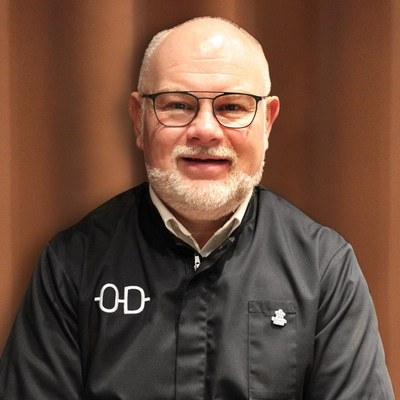
Considering the scope of IP currently, he reflected: “IPs want to be able to manage the majority of anterior segment cases up to a point, and I think it’s very important to work collaboratively with the local primary and secondary care teams so that the care is joined up and flowing in both directions.”
Change is on the horizon for optometrists in Wales, following the agreement of contract reforms in 2022 that intend to better utilise the skills of primary care and see the profession deliver more clinical work in the community.
With the new contract rolling out this year, Drake said: “Hopefully it should open up a lot of opportunities to expand what we do, or to fine tune what we do, to make it work better for everybody.”
In a statement announcing the plans, Eluned Morgan, minister for health and social services in Wales, said the changes seek to enable patients to access eye care services “delivered by the right professional, in the right place across the entire eye care pathway.”
As part of the reforms, a new fee structure working on a tiered basis has also been established, which will see fees of £125 for a new IP patient. Read more of OT’s reporting on this subject.
Piloting eye casualty care
Providing a picture of the scope for IP in Northern Ireland, Brian McKeown, vice-chair of Optometry Northern Ireland (ONI), AOP Councillor and an IP optometrist, told OT: “The scope for IP is slowly developing. IP optometrists can get their prescription pad after they pass their exams and then it’s up to them what they use it for. If you’re proactive you can use it to deliver a higher level of care.
“There certainly is a lot of good will with ophthalmologists who witnessed first-hand what IP optometrists in the community could manage during the pandemic.”
Considering the ambitions the professional body might have for the future, he said: “We feel optometry as a whole has a vital role to play in helping a congested NHS. ONI is working closely with the SPPG to ensure that optometrists always have a voice for future services.”
A pilot is just about to begin in Belfast that would see patients redirected from eye casualty to IP optometrists.
At the time of writing, discussions with stakeholders are being finalised. It is hoped that the pilot will be launched in the coming weeks.
McKeown explained: “Patients will be redirected from a casualty triage system to their nearest IP optometrist. The patient, suffering from iritis, foreign bodies or keratitis, will be managed in the community and a discharge letter, outlining diagnosis and treatment, will be sent to their own optometrist. The service will then be audited to establish whether it will be extended further.”
As of February 2023, there were 40 IP optometrists in Northern Ireland, with more undertaking the training. Looking ahead, what will this growing workforce mean for optometry?
“We need more IP optometrists working in the community to enable a regional IP service. Once we have that, then Northern Ireland will be extremely well-placed to offer a higher level of eye care in the community,” McKeown reflected.
Geography and funding would need to be considerations going forward.
“The big consideration is geographic coverage for any regional scheme. Also, are all the IP optometrists interested in working in a new service? When there is a willing workforce then appropriate remuneration needs to be discussed. The fee needs to cover the optometrists’ time and the enhanced skill level, as well as creating good value to the commissioner,” McKeown said. The fee for the new pilot is £90, he explained.
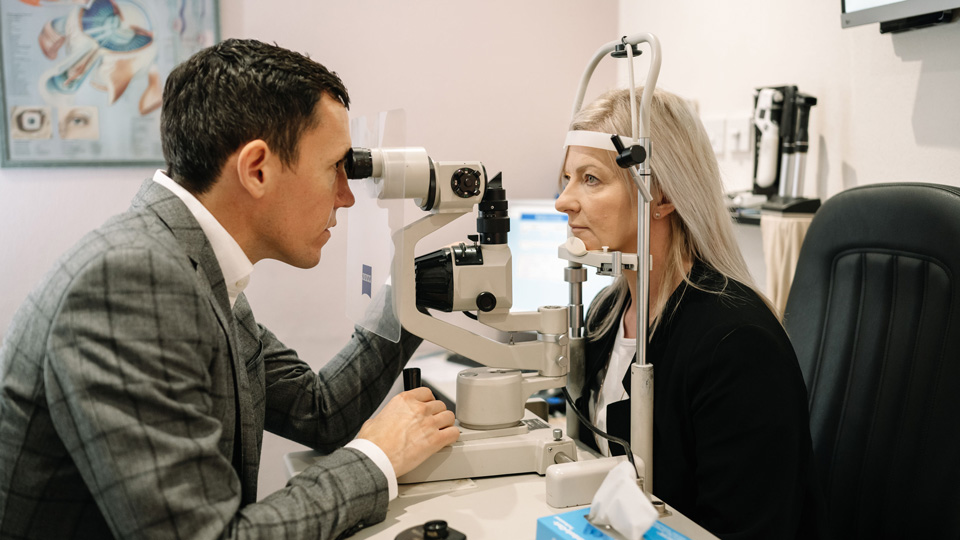
Practice referrals
With optometrists the first port of call for patients presenting with eye concerns in Scotland, Eilidh Thomson, vice chair of Optometry Scotland and an optometrist for Black & Lizars, reflected that the balance is starting to shift towards more provision in primary care optometry practices.
Between 30–40% of the optometry profession in Scotland is made up of IP optometrists. Having the IP workforce as part of the ecosystem of community optometry allows that provision to remain in primary care, Thomson suggested.
This means that patients can be treated closer to home while secondary care can focus on cases that cannot be managed in the community.
“I think that it makes it all more streamlined for the patient. That’s the main thing we are trying to do – make the patient journey better,” Thomson said.
While optometrists may be trained within a health board for a locally established service, if they then move to an area without that service, they wouldn’t be able to utilise those skills, Thomson said, adding: “I think the huge benefit of IP is that it is not confined to just one health board.”
This spring sees a pilot of the Community Glaucoma Service launch in Glasgow, through which IP optometrists who have completed the NHS Education Scotland Glaucoma Award Training (NESGAT) will support the safe discharge of glaucoma patients from the hospital to community optometry practice.
I think the huge benefit of IP is that it is not confined to just one health board
Once the pilot has been delivered, the next step would be to review the learnings and consider what is needed to roll it out across the country.
Meanwhile, plans are in development for a new scheme in Scotland that would outline a list of conditions that could be managed in the community, and would support intra-referral between practices with and without an IP optometrist.
Thomson shared that: “It is hoped that the new scheme will adequately remunerate IP optometrists to encourage business owners to support the service.”
Frank Munro, of Munro Optometrists, a founding member and clinical adviser for Optometry Scotland, has been involved in designing the new specialist supplementary eye examination – building on work carried out in Glasgow to design treatment ladders for anterior eye conditions.
The model, funded through General Ophthalmic Services (GOS), will focus on specific, complex areas of care, with 10 specialty supplementary GOS scenarios defined at present.
Munro explained: “There will be a list of IP optometrists in that area who are willing to see those patients on behalf of non-IP colleagues. The IP colleague would see the patient, treat them, and feedback the results to the non-IP optometrists.”
Describing optometric prescribing as a “national norm” in Scotland, Munro looked back on its path, sharing: “IP is probably a subset of the main developments that have happened in Scotland over the last 20 years or so.”
With the plans for an intra-referral pathway in the works, Munro suggested this would be “another big step change in service development in Scotland, and establishing optometry as the main player for dealing with eye problems in the community.”
Looking at the broader picture for independent prescribing across the UK, Munro suggested that, compared to Scotland, colleagues in England do not have the mechanisms to support IP prescribing, unless there are local systems or arrangements in place.
“I’ve got confidence in my English colleagues to be able to do something like this, but something needs to happen to allow them to take it on,” he said. “It’s all to do with them being empowered and resourced to deliver the service.”
A variable outlook
In interviews with OT, optometrists and stakeholders seemed to agree that the scope in England to utilise the IP qualification to its fullest extent, or to engage in services that would draw on those specialised skills, is variable.
Providing context, Dr Peter Hampson, AOP clinical and professional director, explained that the opportunity to use the full scope of IP “really depends on where you are prescribing.”
“There are a handful of practitioners who have built really quite developed business models around quite a wide range of conditions,” he said, but pointed out that there are those who have the qualification, but feel they are not using it widely or are unsure how to build on it.
Funding and availability of FP10 pads is also an issue, he noted.
“Budget for the FP10 pad has to come from somewhere. Normally this comes from one of the local prescribing budgets; the GP prescribing budget, for example,” Hampson said, adding that this requires a balancing of budgets and a level of assurance.
“Assurance takes time to develop, it’s a chicken-and-egg situation,” he shared.
Zoe Richmond, clinical director of the Local Optical Committee Support Unit (LOCSU), told OT: “Within LOCSU we are well aware there is an interest from primary care practitioners to deliver a wider scope of clinical care, to better meet their patient needs, upskilling and taking on higher qualifications where needed.”
“At the same time, we hear significant frustration from practitioners with higher qualifications that they do not always have the opportunity to fully utilise these skills when working solely within primary care,” Richmond continued. “Even where there are appropriate local commissioning arrangements, empowering primary care clinicians to work in an enhanced clinical role, we often hear that this does not always extend to FP10 pads for IP optometrists.”
Access to FP10 pads
Reflecting on the audit, Richmond told OT that progress has been made in the past two years, explaining: “Our purpose in performing the audit was to raise awareness and encourage local systems to consider solutions, working with their LOCs and primary eyecare companies.”
Local commissioning can lead to fragmentation and variation, but Richmond shared that consistency in the delivery of locally commissioned services has been increasing in recent years.
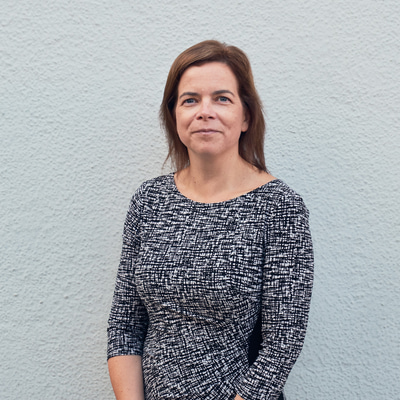
“My ideal would be a national extended eye care service delivered from networks of practices making optimal use of our collective clinical expertise – including those with high qualifications ¬¬– and equipment and providing timely accessible care in local communities,” Richmond said, adding that LOCSU and sector bodies have “long called” for a national solution for England.
In 2022, CCGs ceased to exist and Integrated Care Systems (ICS) became legal entities in England, aiming to deliver ‘joined-up’ health and care services. There are 42 ICSs in England, made up of Integrated Care Boards (ICBs), and Integrated Care Partnerships (ICPs).
With the new structure in place, Richmond suggested: “The move from local commissioning to large ICB commissioning footprints should help to reduce current unwarranted variation.”
Positive momentum and planning to succeed
Specsavers has seen prescribing as a norm in Australia and New Zealand for some time already.
In England, however, Paul Morris, director of professional advancement for Specsavers, identified a “patchwork quilt” effect. “There isn’t one strategy for it. Optometrists have got to plough their own furrow, by offering private services, or I know some who have moved locations so they can more freely practise with the skills they’ve obtained.”
Michael Bradbury, clinical operations communications manager for Specsavers and an IP optometrist, also noted the variation across the country, but added: “I do think there’s been a positive move forward over the last couple of years, with the big uptake of CUES that came as a response to the pandemic. Hopefully there will be a positive legacy of that, a momentum to get more widespread access to those sorts of minor eye care services.”
Despite the variable approaches, IP will be a part of the future, as Morris suggested: “Whatever happens with the health economy in England, IP is absolutely enshrined in the psyche of optometrists and how they wish to develop.”
Morris shared: “It’s quite exciting, whether it goes through or doesn’t, to see that this is the first time something this meaningful has landed in the last decade and it’s brilliant that those conversations are now happening in the House [of Commons].”
Those conversations have already happened in the devolved nations, he suggested, “and you’re seeing the fruits of that.”
In targeted areas where IP forms part of the fabric of the health economy, the company is also sponsoring IP courses.
Reflecting on what IP brings to practices, Morris noted: “Whenever I speak to people who have gone through the IP learnings, they all tell me that they’ve become more confident as clinicians, and that should not surprise us.”
How IP is incorporated into practice depends on services in the local areas, but colleagues are encouraged to use designated slots. Morris said: “Setting up and maintaining an appropriate diary over multiple consulting rooms can be complex. Our local directors and clinicians are best placed to understand their own health economy, having some sort of provision to meet the need, by using the data you have of previous clinics that have run, to predict what you’ll need in the future and set yourself up accordingly,” he elaborated. “It’s planning to succeed.”
Forging a path
Leightons Opticians & Hearing Care is considering what its patient journeys might look like as optometrists seek out higher qualifications such as IP.
There are currently five IP-qualified optometrists working in Leightons practices, with another nine optometrists in the qualification process, meaning more than 20% of Leightons’ employed optometrists either have IP or are on the training journey.
Kiki Soteri, head of clinical services for Leightons Opticians & Hearing Care, explained: “A lot of people think of IP as being related to providing NHS services, and our strength is in our private eye care provision.
“What we’re doing at the moment is looking at how we can deliver IP at a scale, and not waiting for the NHS to provide it. NHS England hasn’t got to the same place as NHS Wales, NHS Scotland, or in Northern Ireland. Therefore, we kind of have to lead the way for private eye care, and IP, and how that fits in.”
Diary management and funding are key considerations to be balanced.
Andrew Bridges, director of professional services at Leightons Opticians & Hearing Care, emphasised that without NHS funding, the fees have to be appropriate to sustain the practice, while Soteri added: “Emergency presentations or consultations may need follow up and review in a short timeframe, and that’s a very different way of working to routine eye examinations with long recall intervals. That would be one of the practicalities – thinking about how practice infrastructure and fee structure can support that.”
Bridges summarised that at Leightons, the focus is now “Looking at – what are those private journeys, processes, protocols, and fee structures, so that we can support our patients.”
Supporting the learning of optometrists is key, Bridges shared, noting that more than 30% of optometrists in the company either have, or are studying for, a higher qualification.
“We’re pleased with that, but we want it to be higher,” he shared. “Making that investment in our people is absolutely vital.”
This isn’t limited to IP, of course, and the group is looking into how optometrists can be enabled to support local enhanced services, particularly in glaucoma.
A natural part of practice
Describing how he sees the scope for IP, Ian Cameron, managing director of Cameron Optometry, a Hakim Group independent practice in Edinburgh, said: “Patchy. If you’re in some practices or settings, there is significant scope to use your IP – even pretty close to its fullest extent. I would say that is the case in our practice.”
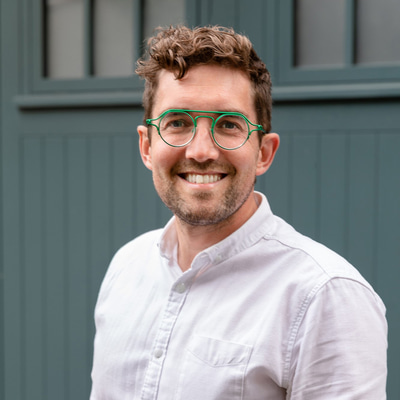
Cameron said: “It’s absolutely in the fabric of every patient interaction and the way we handle people. It’s part of everything we do.”
For the practice, Cameron explained, the ethos is: “Where possible, you keep the patient in practice, and you don’t refer them on or clog up NHS clinics unnecessarily. IP is essential to that if you are trying to manage eye problems and keep them out of other places.”
“That’s why, in my practice when I’m taking on somebody new, they need to be IP-qualified. Because it’s absolutely built into the fabric of how we run the place and how we expect optometrists to deal with the patient in front of them.”
Having a high number of IP-qualified optometrists in the practice also means that the team can share learnings, or ask questions and gain a second opinion on matters.
For practices uncertain about the volume of patients they might see, Cameron recommended seeking out greater links with local GPs.
“If you don’t know the local GPs to your practice by name; introduce yourself and tell them, I’m an IP optometrist, I can deal with the following things because I’ve got the training and equipment, and I’ve got the time to see them. These are all things that the GP does not have,” he suggested.
Evolving practice models
Dr Peter Frampton, practice owner of Aaron Optometrists, a Hakim Group independent practice in Ashington, Northumberland, told OT: “I find it difficult to imagine working without IP. It’s absolutely fundamental to all aspects of our business – not only ocular emergencies – IP is essential for our contact lens business and general optometry services.”
Frampton was one of the first 30 optometrists through the IP qualification. He told OT: “I am very proud to have been in the vanguard pushing the clinical envelope: 30 IP optometrists, many in the hospital system, did not leave a lot to expand general community ‘eye casualty’ services. However, it did allow time to evolve slowly and try a plethora of practice logistics to accommodate this new skill base.”
“Even now, there is no single recipe on how to incorporate IP into community optometry. Every practice has different sets of logistical, educational and service coverage challenges,” he shared.
In 2022, the practice introduced a new fee-based system for general eye exams. Under the new model, patients can see non-IP optometrists for a certain fee or via the NHS, or can opt to pay a top-up fee to see an independent prescriber.
“We think it’s a very fair system,” Frampton said, emphasising that the practice has not become completely private.
While he initially had concerns around pricing, he described the uptake as “outstanding,” adding that it would appear “because we charge for this now but give people the choice, they value it more.”
He acknowledges, however, that the shift to the new model required the practice to have the reputation in prescribing to support it.
Contact lenses
Frampton suggested IP had a clinical and financial impact in contact lens practice, sharing: “There is an immediate demand with your own contact lens patients.”
“To my mind, any contact lens practitioner should be IP-qualified,” Frampton said, suggesting that as contact lenses are medical devices, “It is only logical to have the tools to fix problems – the patient is safer, we are safer, and the CCGs do not foot the bill.”
“We have had a fee-based contact lens model for over two decades, but IP added a huge ‘value’ to the clinical service. A service our patients value and pay for separately to the contact lenses,” he explained.
Cameron also explained that his practice has a contract with the local eye hospital to provide contact lens work in Lothian.
“Even if you’re the best contact lens fitter in the world, people are going to get abrasions and infections and all sorts of things are going to go wrong with eyes. That gives us a lot of opportunity to practise IP. I think we’re fortunate in that way, because it keeps our IP skills sharp,” he said.
The cost to value ratio
IP optometrists described the value that IP brings to them, in terms of practice and personal fulfilment.
Cameron shared: “It makes my patient interactions and clinical work more enjoyable because I can use my skills and help people where I can. What I want to do as an eye care practitioner is look after people’s eyes and this helps me to do that.”
“I think it’s a practice builder,” he added.
However, the profitability of IP can be a trickier, or more nebulous, part of the equation.
“Seeing people for IP appointments is not as profitable as selling them a pair of glasses. But I think, in the overall mix of a practice, it is good,” Cameron said. “I think it’s important for the practice, and to progress the practice, and my optometrists, to give them and me job satisfaction, and to benefit my patients.”
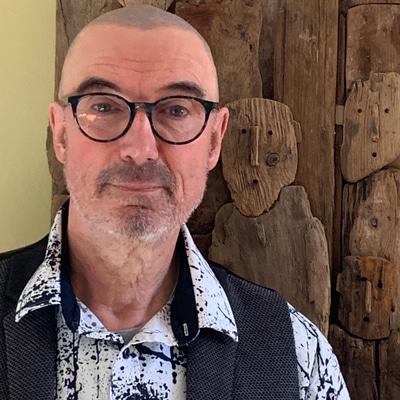
Frampton also highlighted the “significant but unquantifiable benefits” that the IP-qualification brings to practice, patients and colleagues. The work fulfilment is one key benefit, Frampton noted, but added: “Even general optometry work is becoming clinically more demanding as patients seek out our advice on general health issues.”
“The trust patients place in us and our continuity of care is extremely rewarding but generates further stress on the traditional optometry model; the ‘value’ becomes the examination, not a vision correction,” he said. This was part of the motivation behind the practice launching its new system last year, to a “remarkable” response from patients.
Frampton suggested: “General ‘emergency eye’ management is more financially challenging, especially when many schemes, such as MECS and CUES come pre-budgeted.”
“You have to restructure what you do and think outside of the box, developing practice processes that work to the budget,” he advised, but recognised the hurdle this can present: “Managers tend to think in terms of replacement theory: they see it replacing the sales of spectacles, which does not necessarily make sound business sense. What you have got to try to do is come up with a business strategy where it is an alternative, additional supply – not a replacement one.”
He explained his view that a “different paradigm” is needed for IP optometry: “I think of them as two different businesses under one roof. The IP business may not be as profitable as our traditional core model, but practice processes ensure, ideally, it represents an auxiliary revenue stream rather than replacement.”
Reflecting on the ways IP optometry has changed and grown over time, Frampton adapted the adage, ‘educate then legislate’ to ‘educate then instigate.’ For practices just starting out with prescribing services, the journey may be tougher.
“In my opinion, we have done it the correct way, but it has been a financially stressful process, because we had to commit to the educational and logistical processes before we offered a valuable service. Here I am, 12 years on, it is coming to fruition,” he said.
Morris also suggested that practitioners interested in higher qualifications shouldn’t wait for a service to train.
“What I’ve learned over years and years of working with commissioners in audiology, as well as optometry, is that if the skillset is there, people will use it,” he said. “Whereas, if you wait for the perfect service to arrive on your doorstep, then it’s ultimately never going to come. But if you are proactive, put your best foot forward, and make this investment in yourself, you will get to use those skills – and we should be empowering as many clinicians as we can towards that goal.”
Balancing the workforce
With numbers of IP optometrists growing, Hampson explained that looking at the spread of the workforce, as well as the distribution of workload, would be important.
He suggested: “There is definitely an argument for ¬– if you’ve got the workforce already, it makes it easier to then commission something.”
This is particularly true when taking into account that the IP qualification is an approximately two-year process.
“However, having the workforce in place is more complicated than simply having the IP optometrists – it is the distribution of them as well,” he continued, highlighting existing recruitment challenges, such as ensuring IP optometrists are established in more remote and rural places.
Optometry First
“Optometry First recognises the increased scope of care that can be delivered in teams which include optometrists with IP,” Richmond told OT.
“In the future we won’t look to our own practice team capability in isolation, but will work across a network of practices, recognising and fully utilising the skills in the wider team to best meet patient needs within local communities,” she continued. While this happens in ‘pockets of excellence,’ the Optometry First approach would make this “commonplace.”
Making the best use of these skills, Richmond emphasised: “Practitioners should not be required to hold the same higher qualifications, but should be able to identify an area of personal interest and integrate care across a network of practices, based on local need, to make full use of their skills and maintain confidence and clinical exposure.”
Future focus
“Where are we going with all this? I think it’s about the new contract and good communication between primary and secondary care,” Drake told OT.
“Independent prescribers need to be able to do what it is that they want to do, but they also need to fit into the big scheme of things as well,” he said. “I think there’s lots of scope for expansion, as long as it’s done in a collaborative way.”
Thomson reflected that the demand for IP training is already there amongst graduating optometrists, sharing: “If I’m undertaking an interview with a relatively newly-qualified optometrist, one of the questions I always ask is what their career aspirations are for the future. I can’t remember the last time that somebody didn’t mention IP.”
Cameron also noted that Scotland has a significant cohort of IP optometrists, suggesting: “I feel the pendulum shifting towards that being part of the culture here.”
With the glaucoma service, and referral between optometry practices in the pipeline, he said: “If you want to be a player in any of those things, you’re going to need your IP.”
I’ve no doubt there’s a role for an increased number of optometrists with higher qualifications and IP in England
Looking at the current scope for independent prescribing, and considering the future, Soteri reflected: “I think we need to think more widely about the scope of contribution that optometry can play into helping people receive care closer to home, more conveniently, in a more timely manner, and that optical practices in the community do that at a time when our patients otherwise would have to go to a secondary care setting or hospital, wait a long time to see an appropriate professional, and those services are really overburdened right now.”
Soteri shared her hope to see, in the near future, a move away from pharmacies being a first port of call for eye care needs, sharing: “I think there’s plenty of scope for optometry to do that, but we’re still probably at the exploratory phase, just because of the patchwork of NHS commissioning and, therefore, looking at what that can do.”
Considering what an expanded IP workforce might mean for optometry, and healthcare more broadly, Richmond reflected: “There is a need to better understand the current eye care workforce, as well as future workforce requirements of our new models of care.”
Richmond continued: “I’ve no doubt there’s a role for an increased number of optometrists with higher qualifications and IP in England, as we move to delivering more eye care locally and releasing capacity within hospitals for those with the most complex health needs.”
OT would like to thank the contributors to this report for their insight and time in sharing views and experiences.
Advertisement


Comments (0)
You must be logged in to join the discussion. Log in